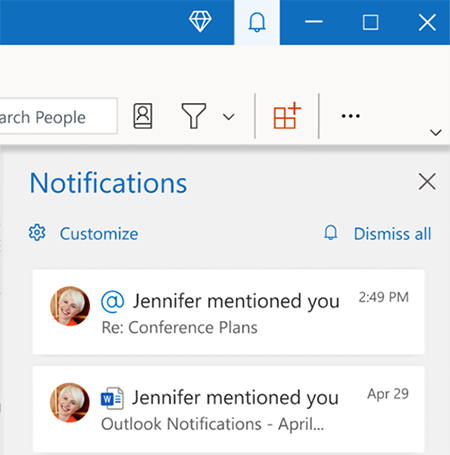What you need to know
- Microsoft Outlook has a new notifications pane in testing that allows users to customize which types of notifications appear.
- The same experience is already available for Outlook for the web.
- The new notifications pane will be available to enterprise customers at first and will roll out to general consumers in the future.
Microsoft Outlook is bringing another great feature from the web to Outlook for Windows. Right now, the company is testing a new notifications pane among Insiders that allows users to customize which types of notifications appear. For example, a person could set Outlook to notify them of @mentions and travel updates but not about emails.
This setup is already available for Outlook on the web and is currently in testing among Insiders who are enterprise customers. Specifically, Microsoft is rolling out the new notifications pane to Office Insiders running Windows Beta Channel Version 2208 (Build 15408.10000) or later.
“The Notifications pane allows you to stay connected, delivering notifications that are relevant to you in the context of your regular email,” explains Microsoft (opens in new tab). “The pane gives you the ability to customize the types of notifications you wish to receive, including email and document @mentions, travel updates, deliveries, and more.”
The feature is relatively straightforward, but Microsoft has a step-by-step guide to set it up:
- Select the Notifications icon () at the top-right corner of your Outlook window to display a list of email and document notifications.
- Click an email @mention notifications card in the Notifications pane; this opens the email related to that notification in a popped-out email window.
- Select Customize in the top-left corner of the Notifications pane of notifications you want to see going forward.

Clicking on an @mention notifications card will open the corresponding item, such as an email or Word comment. At the moment, notifications cards will open Word documents on the web rather than Word for Windows, but Microsoft is looking to fix this in the future.




